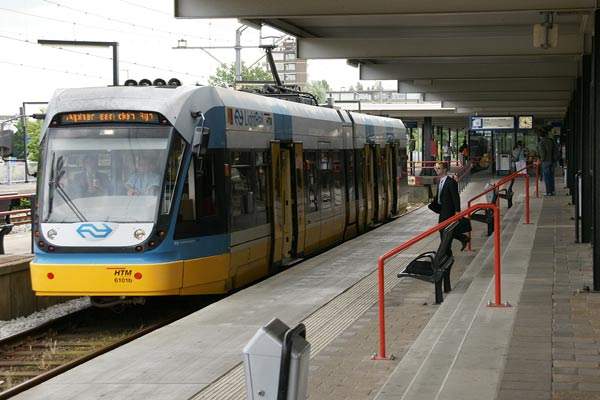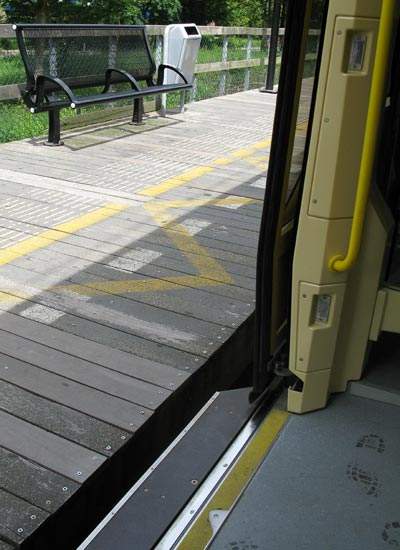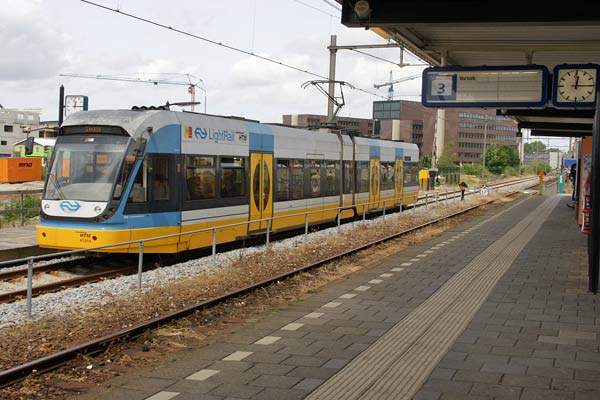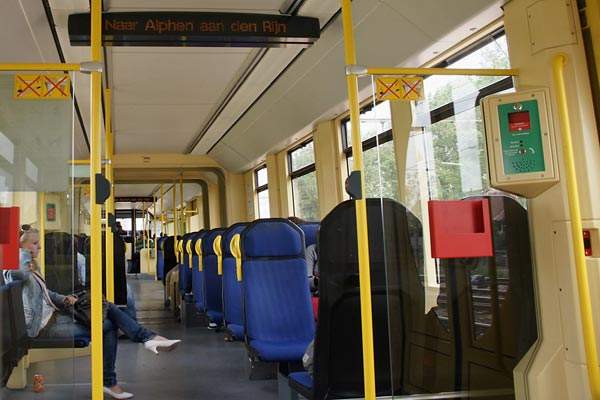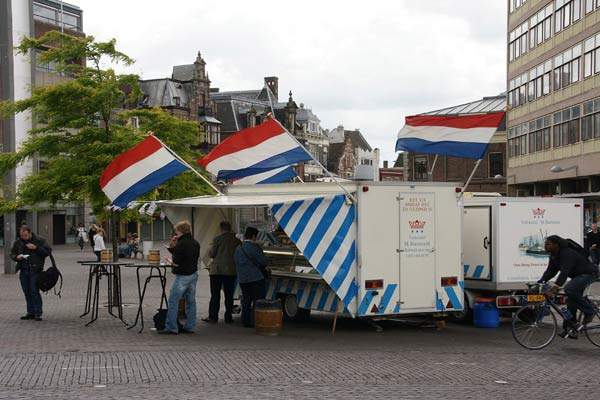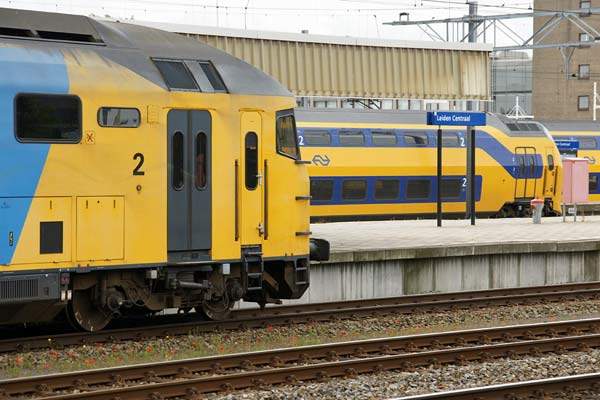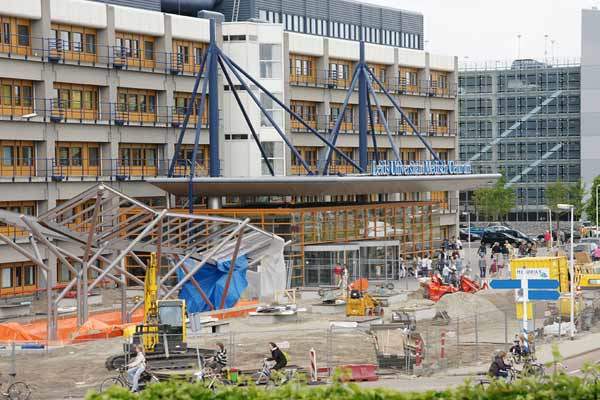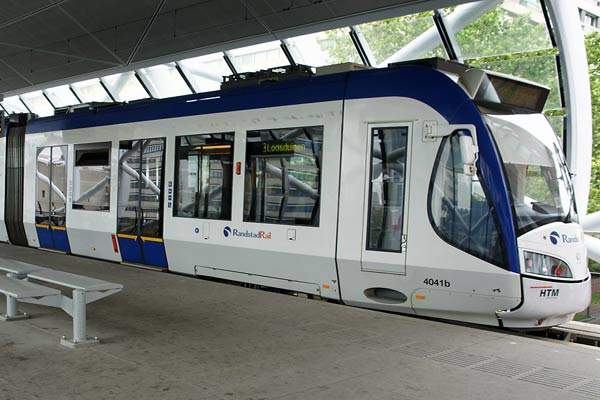The most densely populated province in the Netherlands, Zuid (South) Holland features intense rail activity. Main line services are managed by national operator Nederlandse Spoorwegen (NS), there are sizable tram networks in the provincial capital Den Haag and the biggest city Rotterdam also has a metro.
Based on Den Haag and Rotterdam is the RandstadRail operation which, after a troubled inception, is becoming established in service and in identity. To counteract the congestion encountered in this small but highly developed area, the province of Zuid Holland is sponsoring a project for a new rail operation.
THE PROJECT
The Rijn Gouwelijn (RGL) project is for the creation of a tram-train operation from Gouda through Alphen aan den Rijn (both with populations of over 70,000) to Leiden, whose population with adjoining communities exceeds a quarter of a million.
Already with the high population density characteristic of the Randstad region, the RGL will pass through an area scheduled for more housing developments.
From Leiden, a western section will run north-west towards the coast, branching to the North Sea resort and commuter towns of Noordwijk (12km from Leiden) and Katwijk aan Zee (8km).
With over 60,000 residents, the latter is currently the Netherlands’ biggest community without any rail service. Early indications were of a total project cost of €470m.
INFRASTRUCTURE
Since 2003 a trial service (which continues) with tram vehicles has run half-hourly over the heavy rail section from Gouda, an interchange with the Utrecht-Den Haag main line, to Alphen aan den Rijn, also an NS interchange for Leiden and Utrecht. Destined to become a composite part of the RGL operation, this partly single-track secondary route has been made compatible with the low-floor trams.
New low platforms 40cm above the railhead opposite the standard NS high platforms, as at Waddinxveen and Alphen aan den Rijn, or single platforms with ends of different height, have been built. The track is managed by ProRail, the publicly funded national heavy rail infrastructure body.
Remodelling of the Alphen aan den Rijn station area in connection with the RGL proper began in May 2008. The heavy rail section will gain extra stops as the project proceeds.
The RGL plans promoted by Zuid Holland in respect of the street-running sections through Leiden’s historic centre were rejected with a 69% vote by the city’s residents in a referendum held in 2007. Particular objections centred on the use of the picturesque Breestraat for rail use.
Although the vote carried no legal weight and opposition continues, the intended alignment has been changed and will require substitute roads to be added, all adding significantly to project costs.
The system’s busiest point is likely to be at Leiden Centraal on NS’s Amsterdam-Den Haag-Rotterdam main line. The oldest university in the Netherlands, prosperous Leiden has a large student population, is a commercial centre and, like Gouda and the coastal towns, experiences significant tourism flows.
ROLLING STOCK
Deliveries of the light rail stock were from October 2002 to the NS Leidschendam depot in Den Haag, being operated in association with HTM, operator of that city’s tram network and RandstadRail partner. Gouda to Alphen aan den Rijn services are worked by a fleet of six two-car Bombardier type A32, originally specified for Stockholms Lokaltrafik AG in Sweden.
Based on a design used around Cologne and classified by the manufacturers as a Flexity Swift, the 72% low-floor units operate singly or in pairs.
With an anticipated frequency of 7.5 minutes each way, a new fleet is likely to be procured for tram-train operations.
Although as yet unspecified, the promoters make reference to the RandstadRail low-floor vehicles in Den Haag (Alstom Regio Citadis) as an indicator of the standards that may apply.
They also suggest street speeds of 15km/h, up to 35km/h on reserved track with the potential for 100km/h (62mph) running over the railway section.
SIGNALLING AND COMMUNICATIONS
At present the trams need only operate under the signalling system of the NS route over which they operate, although dual systems are likely to apply on the completed scheme. With frequent services over streets, it is probable that real-time indicators will be fitted throughout.
THE FUTURE
Initial construction works began in mid-2008. Previous delays suggest that schedules may slip again, although the plan is for the RGL to be delivered in three phases, the first being the reworked Gouda-Alphen den Rijn line by the end of 2010. This would be followed by the arms east and west of Leiden by 2015.

